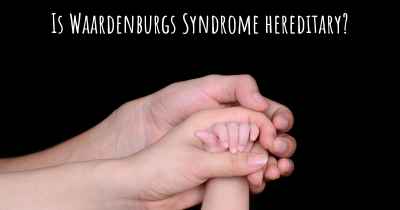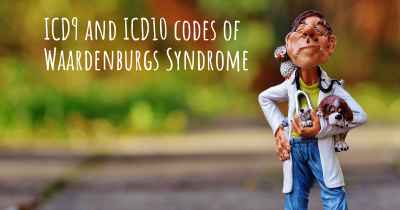What is the history of Waardenburgs Syndrome?
When was Waardenburgs Syndrome discovered? What is the story of this discovery? Was it coincidence or not?

Waardenburg Syndrome:
Waardenburg Syndrome is a rare genetic disorder that affects the pigmentation of the eyes, hair, and skin. It was first described by Dutch ophthalmologist Petrus Johannes Waardenburg in 1951. Dr. Waardenburg noticed a pattern of inherited deafness and distinctive facial features in several families he studied, leading him to identify this condition as a distinct syndrome.
Discovery and Classification:
Dr. Waardenburg's initial research focused on families in the Netherlands, where he observed individuals with similar physical characteristics. He identified key features such as wide-set eyes (hypertelorism), a broad nasal bridge, and a white forelock of hair. Additionally, he noted that some individuals with this syndrome experienced varying degrees of hearing loss.
Genetic Basis:
Waardenburg Syndrome is caused by mutations in several genes involved in the development and function of cells that produce melanin, the pigment responsible for hair, skin, and eye color. The most common genes associated with this syndrome are PAX3, MITF, EDNRB, EDN3, and SOX10. These genes play crucial roles in the migration and differentiation of cells during embryonic development.
Subtypes:
Over time, researchers have identified several subtypes of Waardenburg Syndrome based on the specific genetic mutations and clinical features. The most common subtypes are Waardenburg Syndrome type 1 (WS1) and type 2 (WS2). WS1 is characterized by hearing loss and pigmentary abnormalities, while WS2 typically presents with normal hearing but more pronounced pigmentation changes.
Prevalence and Inheritance:
Waardenburg Syndrome is considered a rare disorder, with an estimated prevalence of 1 in 40,000 individuals. It can affect people of any ethnic background, although certain subtypes may be more common in specific populations. The syndrome is typically inherited in an autosomal dominant pattern, meaning that an affected individual has a 50% chance of passing the condition on to their children.
Clinical Features:
In addition to the characteristic facial features, individuals with Waardenburg Syndrome may have widely spaced eyes, different-colored irises (heterochromia), a prominent nasal root, and a high, arched palate. Pigmentation changes can include patches of white or prematurely graying hair, as well as two different-colored eyes. Some individuals may also have congenital hearing loss, which can range from mild to profound.
Treatment and Management:
There is currently no cure for Waardenburg Syndrome, and treatment focuses on managing the specific symptoms and associated conditions. For individuals with hearing loss, hearing aids or cochlear implants may be recommended. Regular monitoring of vision and hearing is important, and individuals with this syndrome may benefit from early intervention and support services.
Conclusion:
Waardenburg Syndrome is a rare genetic disorder characterized by distinctive facial features and pigmentation changes. Dr. Petrus Johannes Waardenburg's pioneering work in the 1950s led to the identification and classification of this syndrome. Ongoing research continues to improve our understanding of the genetic basis and clinical features of Waardenburg Syndrome, ultimately leading to better management and support for affected individuals and their families.
Posted Jun 2, 2017 by Misheal 2240








